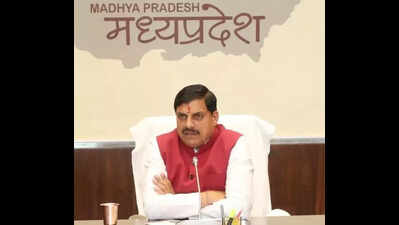- News
- City News
- bhopal News
- Cabinet clears DA hike, eases transfer norms for govt staff
Trending
Cabinet clears DA hike, eases transfer norms for govt staff
Bhopal: The state cabinet, chaired by CM Mohan Yadav, on Monday announced a relaxation in transfer rules, and approved a hike in dearness allowance (DA) for govt employees.
Briefing reporters after the meeting, urban administration minister Kailash Vijayvargiya said DA for employees drawing salaries under the Seventh Pay Commission scale will rise by 3% from July 1, 2024, and by a further 2% from Jan 1, taking the total to 55%. This brings Madhya Pradesh in line with the DA rates of central government employees.
The move will add an estimated burden of Rs 3,500 crore to the state exchequer, including arrears. The finance dept has also been authorised to revise DA for employees under the Sixth, Fifth, and Fourth Pay Commissions, including those on deputation from boards and corporations.
In another key decision, the cabinet approved the Transfer Policy for 2025, allowing movement of officials at state and district levels during a window from May 1 to May 30.
Besides, the cabinet approved the establishment of a 2000 MW solar park along with a 1000 MW composite energy storage project in the state. This initiative aims to supply electricity on a complimentary basis to both Madhya Pradesh and Uttar Pradesh, as the peak demand periods of the two states occur at different times of the year.
"Under this arrangement, the project will provide power to each state for six months annually, ensuring efficient utilization of resources and enhanced energy security for both regions," the release stated.
Vijayvargiya said in Madhya Pradesh, the agricultural sector accounts for approximately 41% of the state's total electricity consumption. Due to the climatic conditions, electricity demand for agriculture peaks between October and March, primarily for Rabi crop cultivation.
"Our demand for energy drops during the monsoons while in Uttar Pradesh energy consumption is higher during the Kharif season," he said. "Conversely, during the Rabi season — when Madhya Pradesh's demand peaks — Uttar Pradesh's requirement declines. This complementary pattern offers an opportunity for efficient energy distribution between the two states," the minister said.
In a separate move, a committee headed by additional chief secretary Ashok Barnwal was constituted to oversee implementation of the Unified Pension Scheme for govt employees appointed after Jan 1, 2005.
End of Article
Follow Us On Social Media








